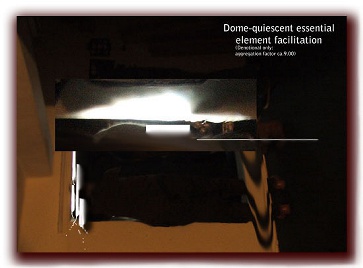|
|



Background: Throughout the 1930s and 1940s the Journal of Distality was the leading academic journal for
papers on phobic nuance. Although much has been made of the contributions of both Nuphobia and the less
widely distributed Annals of Phobic Trend, they were both slow to recognise the changing tide of ideas at
the time, favouring referees who tended to the status quo. Science That Never Was will be publishing, later
this year, the story of the editorial battles which nearly broke the career of the great scientific essayist
Serpentine Fender, under the title A Man for All Reasonables. TheThree Laws of Zonic Modality state:
1.) No modality shall be greater than the preceding non-modal entity (It is common nowadays to cite Rawlins, 1971, as a rider to this. It was, nevertheless a remarkable insight at the time)
2.) If a modality has a resonance greater than 5kLi then each subsequent modality shall be within the normal modality spectrum (Rawlins and Partfold, 1973)
3.) If resonance and modality have bi-cleft form, then each shall be less than the sum of two smaller bi-cleft modalities. (We now know that Rule 3 has been reassessed in the light of discoveries in the field of Zonic Partitioning (Merrill, Partfold & Rawlins)
The elegance of the Third Rule, though, despite its inherent contradictions, is often used to illustrate great steps in scientific thinking) Science That Never Was will, later this year, also be putting online excerpts from the recently un-banned Cardell & Cardell: Brothers or Mothers ? now that an out-of-court settlement has been reached between the brothers' grandson and the University of Bradford where many of the offences are alleged to have taken place during the drafting of Cardell & Cardell, (1931)
1.) No modality shall be greater than the preceding non-modal entity (It is common nowadays to cite Rawlins, 1971, as a rider to this. It was, nevertheless a remarkable insight at the time)
2.) If a modality has a resonance greater than 5kLi then each subsequent modality shall be within the normal modality spectrum (Rawlins and Partfold, 1973)
3.) If resonance and modality have bi-cleft form, then each shall be less than the sum of two smaller bi-cleft modalities. (We now know that Rule 3 has been reassessed in the light of discoveries in the field of Zonic Partitioning (Merrill, Partfold & Rawlins)
The elegance of the Third Rule, though, despite its inherent contradictions, is often used to illustrate great steps in scientific thinking) Science That Never Was will, later this year, also be putting online excerpts from the recently un-banned Cardell & Cardell: Brothers or Mothers ? now that an out-of-court settlement has been reached between the brothers' grandson and the University of Bradford where many of the offences are alleged to have taken place during the drafting of Cardell & Cardell, (1931)

